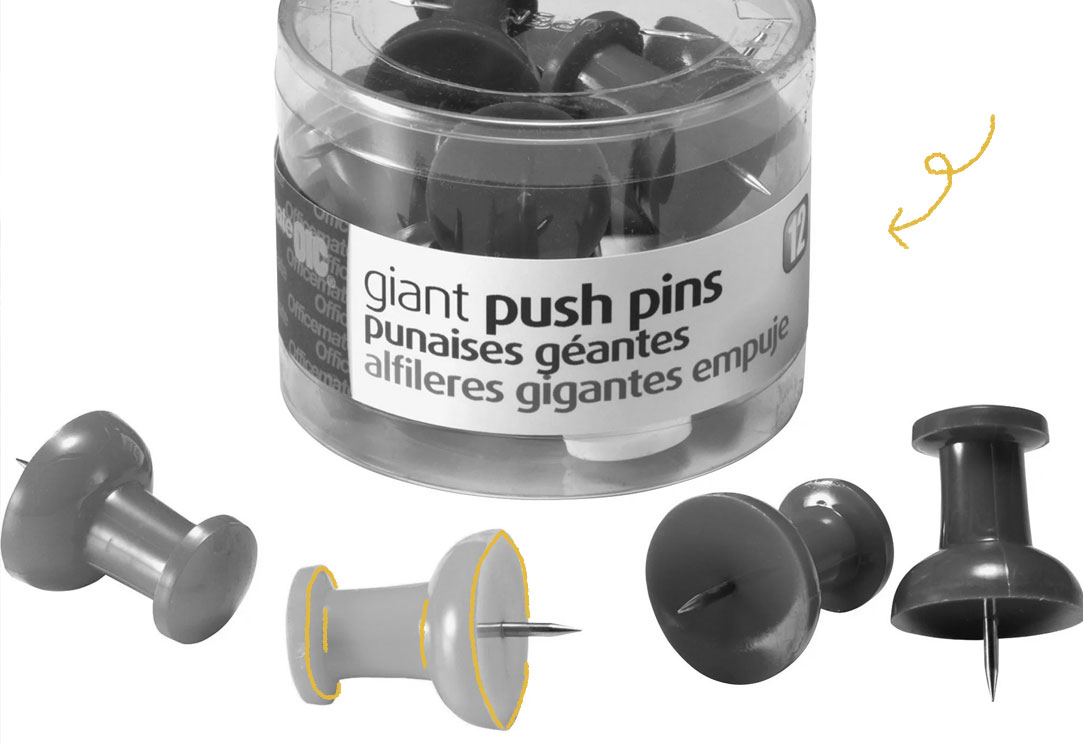Push pins were invented by Edwin Moore of Newark, New Jersey. He patented his invention in 1900. His original push pins were made of glass and steel — he once referred to his invention as “a pin with a handle.” After manufacturing and selling his invention for a few years independently, Moore created the Moore Push-Pin Company in 1904. Reportedly, one of his most significant early orders came from the Eastman Kodak Company. Soon enough, push pins took off and became staple items in homes and offices all over the world. Notably, the Moore Push-Pin Company is still in operation today and push pins remain an important — if often overlooked — item in the modern word. Today, they are still routinely used for affixing notes and memos to corkboards and attaching posters to bedroom walls; they even play a key role in the art world, where they are often used to stretch canvases or temporarily hold mixed-media items in place.

Your go-to guide for weird history facts
Subscribe to the FREE daily email that makes learning about history fun.


